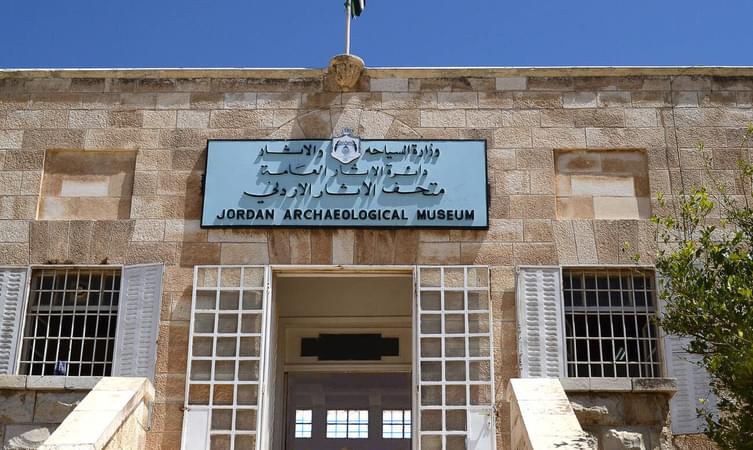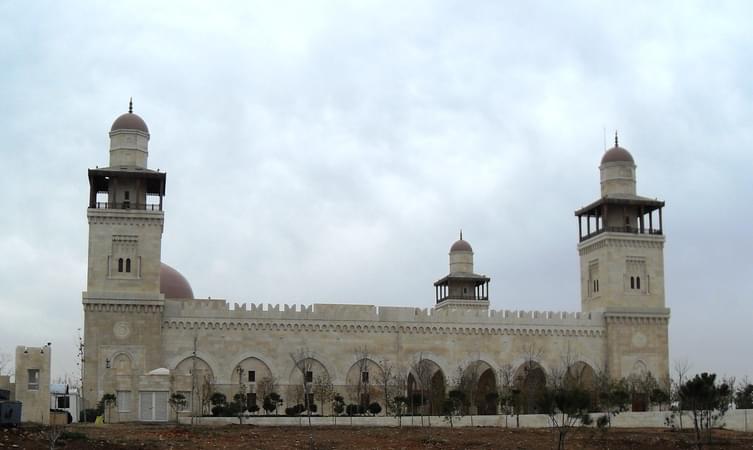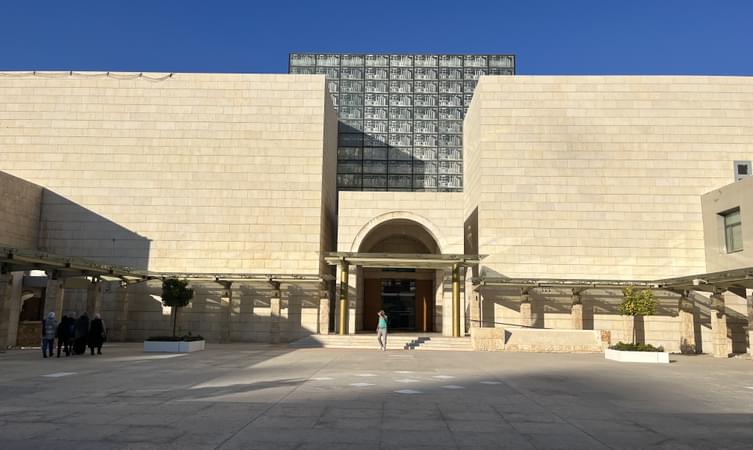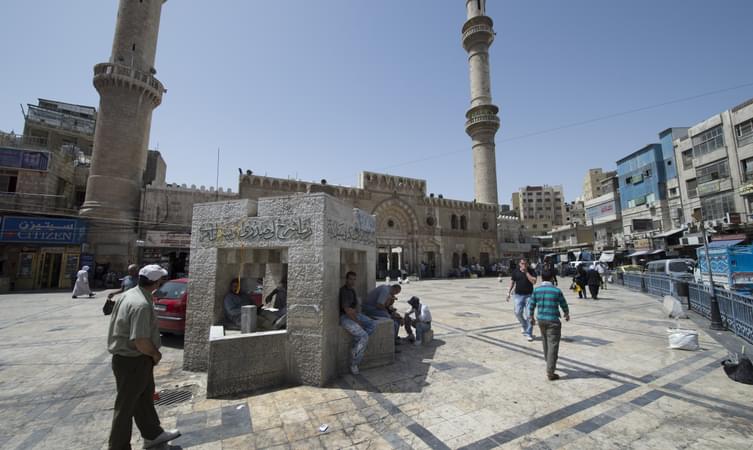
King Abdullah I Mosque, located in Amman, Jordan, is a stunning blue-domed mosque built in honor of King Abdullah I. It accommodates thousands of worshippers and features intricate Islamic architecture, a large prayer hall, and an Islamic museum showcasing historical artifacts.

The Jordan Archaeological Museum, located in Amman, is a prominent cultural and historical institution showcasing Jordan's rich archaeological heritage.

The Royal Automobile Museum in Amman, Jordan, is a fascinating destination showcasing the country’s rich automotive history and royal heritage. Established in 2003 by King Abdullah II, the museum houses an impressive collection of classic, vintage, and luxury cars and motorcycles, many of which belonged to the late King Hussein.

- 2D
- Amman

The King Hussein Mosque in Amman, Jordan, is one of the country's most significant and largest mosques. Located in the Dabouq area, it stands as a symbol of Jordan’s Islamic heritage and architectural grandeur. The mosque was inaugurated in 2005 by King Abdullah II in honor of his grandfather, King Hussein bin Talal, who ruled Jordan from 1952 to 1999.
Souk Jara
.jpg?w=753&h=450&dpr)
Souk Jara is a vibrant and lively outdoor market in Amman, Jordan, known for its unique blend of traditional and contemporary offerings. Held every Friday during the summer months, this bustling market is located in the historical downtown area of the city, specifically along the Jabal Amman hills. Souk Jara is a popular gathering spot for both locals and tourists, providing a dynamic atmosphere filled with colorful stalls, street performers, and live music.

The Jordan Museum, located in Amman, Jordan, is a premier cultural institution that showcases the rich history, heritage, and diverse civilizations that have shaped the country. Opened in 2014, the museum offers an immersive experience through its wide array of exhibits, highlighting Jordan's archaeological and cultural wealth from prehistoric times to the modern era.

- 5H
- Amman

- 1D
- Amman

- 8H
- Amman

The Grand Husseini Mosque is one of Amman, Jordan’s most significant religious and historical landmarks. Built in 1924 by King Abdullah I, it stands on the site of an earlier mosque dating back to the Umayyad period. Its striking architecture, featuring pink and white stone, reflects traditional Islamic design while blending with Jordan’s cultural heritage.

The Amman Citadel, located atop Jebel al-Qala’a in the heart of Jordan’s capital, Amman, is one of the most significant archaeological sites in the country. This ancient hilltop complex has been continuously inhabited for thousands of years, with traces of Roman, Byzantine, and Umayyad civilizations.
















